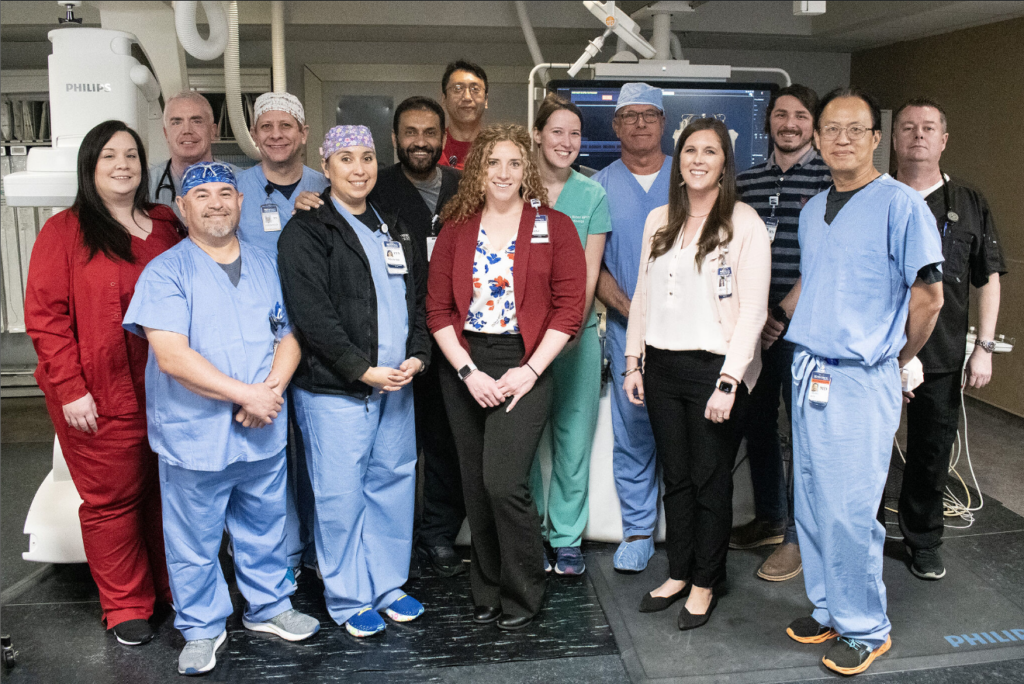REFERENCES
[1] Savarese G, Lund LH. Global Public Health Burden of Heart Failure. Card Fail Rev. 2017 Apr 3;(1):7-11. Available from: https://pubmed.ncbi.nlm.nih.gov/28785469/ PMID: 28785469; PMCID: PMC5494150.
[2] Simmonds SJ, Cuijpers I, Heymans S, Jones EAV. Cellular and Molecular Differences between HFpEF and HFrEF: A Step Ahead in an Improved Pathological Understanding. Cells. 2020 Jan 18;9(1):242. Available from: https://doi.org/10.3390/cells9010242 PMID: 31963679; PMCID: PMC7016826.
[3] Udelson, J, Barker, C, Wilkins, G., Gooley, R., Lockwood, S., Potter, B., Meduri, C., Fail, P., Darrell, S., Feldt, K., Krigel, J., Shaburishvili, T. No-Implant Interatrial Shunt for HFpEF: 6-Month Outcomes From Multicenter Pilot Feasibility Studies. J Am Coll Cardiol HF. 2023 Aug 11;8(2): 1121–1130. Available from: https://www.jacc.org/doi/abs/10.1016/j.jchf.2023.01.024.
[4] Dunlay, S., Roger, V., Redfield, M. Epidemiology of heart failure with preserved ejection fraction. Nature Review Cardiology [Internet]. 2017;14:591-602. Available from: https://www.nature.com/articles/nrcardio.2017.65.
[5] Sharma K, Kass DA. Heart failure with preserved ejection fraction: mechanisms, clinical features, and therapies. Circ Res. 2014 Jun 20;115(1):79-96. Available from: https://pubmed.ncbi.nlm.nih.gov/24951759/ PMID: 24951759; PMCID: PMC4146618.
[6] Feldman T, Mauri L, Kahwash R, Litwin S, Ricciardi MJ, van der Harst P, Penicka M, Fail PS, Kaye DM, Petrie MC, Basuray A, Hummel SL, Forde-McLean R, Nielsen CD, Lilly S, Massaro JM, Burkhoff D, Shah SJ; REDUCE LAP-HF I Investigators and Study Coordinators. Transcatheter Interatrial Shunt Device for the Treatment of Heart Failure With Preserved Ejection Fraction (REDUCE LAP-HF I [Reduce Elevated Left Atrial Pressure in Patients With Heart Failure]): A Phase 2, Randomized, Sham-Controlled Trial. Circulation. 2018 Jan 23;137(4):364-375. Available from: https://pubmed.ncbi.nlm.nih.gov/29142012/ PMID: 29142012.
[7] Shah SJ, Feldman T, Ricciardi MJ, Kahwash R, Lilly S, Litwin S, Nielsen CD, van der Harst P, Hoendermis E, Penicka M, Bartunek J, Fail PS, Kaye DM, Walton A, Petrie MC, Walker N, Basuray A, Yakubov S, Hummel SL, Chetcuti S, Forde-McLean R, Herrmann HC, Burkhoff D, Massaro JM, Cleland JGF, Mauri L. One-Year Safety and Clinical Outcomes of a Transcatheter Interatrial Shunt Device for the Treatment of Heart Failure With Preserved Ejection Fraction in the Reduce Elevated Left Atrial Pressure in Patients With Heart Failure (REDUCE LAP-HF I) Trial: A Randomized Clinical Trial. JAMA Cardiol. 2018 Oct 1;3(10):968-977. Available from: https://pubmed.ncbi.nlm.nih.gov/30167646/ PMID: 30167646; PMCID: PMC6233816.
[8] Udelson, J, Barker, C, Wilkins, G., Gooley, R., Lockwood, S., Potter, B., Meduri, C., Fail, P., Darrell, S., Feldt, K., Krigel, J., Shaburishvili, T. No-Implant Interatrial Shunt for HFpEF: 6-Month Outcomes From Multicenter Pilot Feasibility Studies. J Am Coll Cardiol HF. 2023 Aug 11;8(2): 1121–1130. Available from: https://www.jacc.org/doi/abs/10.1016/j.jchf.2023.01.024.
[9] Udelson, J, Barker, C, Wilkins, G., Gooley, R., Lockwood, S., Potter, B., Meduri, C., Fail, P., Darrell, S., Feldt, K., Krigel, J., Shaburishvili, T. No-Implant Interatrial Shunt for HFpEF: 6-Month Outcomes From Multicenter Pilot Feasibility Studies. J Am Coll Cardiol HF. 2023 Aug 11;8(2): 1121–1130. Available from: https://www.jacc.org/doi/abs/10.1016/j.jchf.2023.01.024.
[10] Oktay AA, Shah SJ. Diagnosis and management of heart failure with preserved ejection fraction: 10 key lessons. Curr Cardiol Rev. 2015;11(1):42-52. Available from: https://library.une.edu/research-help/help-with-citations/nlm-style/ PMID: 24251461; PMCID: PMC4347209.
[11] Butler J, Fonarow GC, Zile MR, Lam CS, Roessig L, Schelbert EB, Shah SJ, Ahmed A, Bonow RO, Cleland JG, Cody RJ, Chioncel O, Collins SP, Dunnmon P, Filippatos G, Lefkowitz MP, Marti CN, McMurray JJ, Misselwitz F, Nodari S, O’Connor C, Pfeffer MA, Pieske B, Pitt B, Rosano G, Sabbah HN, Senni M, Solomon SD, Stockbridge N, Teerlink JR, Georgiopoulou VV, Gheorghiade M. Developing therapies for heart failure with preserved ejection fraction: current state and future directions. JACC Heart Fail. 2014 Apr;2(2):97-112. Available from: https://www.ncbi.nlm.nih.gov/pmc/articles/PMC4028447/ PMID: 24720916; PMCID: PMC4028447.
[12] Regitz-Zagrosek V. Sex and Gender Differences in Heart Failure. Int J Heart Fail. 2020 Apr 13;2(3):157-181. Available from: https://doi.org/10.36628/ijhf.2020.0004





